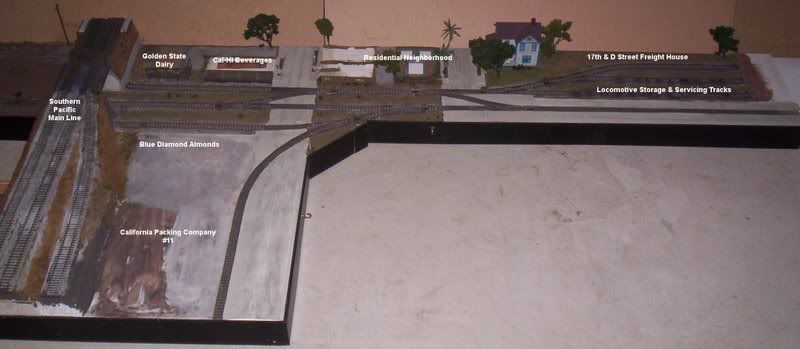12" "curves" is kind of a misnomer. As you can see, there is only one curve on the entire layout, an industrial spur. I use 40 and 50 foot cars (mostly 40 foot) and motive power is a pair of 44-ton GE switchers and an S1, with occasional appearances by an SW7, a GE 70-tonner, and for those really heavy-duty situations I use my heaviest motive power, a GP-9. All but the Geep can take the 12" curve, at least when run carefully, and since it is a switching spur and not the mainline it isn't used for high or even moderate speed traffic. I model a line called the Sacramento Northern, and the largest power they ever owned was the aforementioned Geep and a couple of F-units, neither of which were used on this stretch of track, which was exclusively the territory of small switching locomotives during the diesel era of 1953-1966.
As the layout progresses and I hang trolley wire overhead, I will start using boxcab and steeplecab electric locomotives on the layout, which are usable on curves even sharper than 12" radius. This will allow me to model 1947-1953, years when the earlier small diesels shared the rails with electric freight motors.
The only problems with the 12" curves weren't due to the track itself, but due to the street surface, currently 1/8" foamcore and .020" styrene. The foamcore tends to buckle a bit with extreme changes in temperature, which were unavoidable in my old garage. One of my future plans is to replace this street surface with a more sturdy and less temperature-sensitive street surface of Durham's Water Putty.





